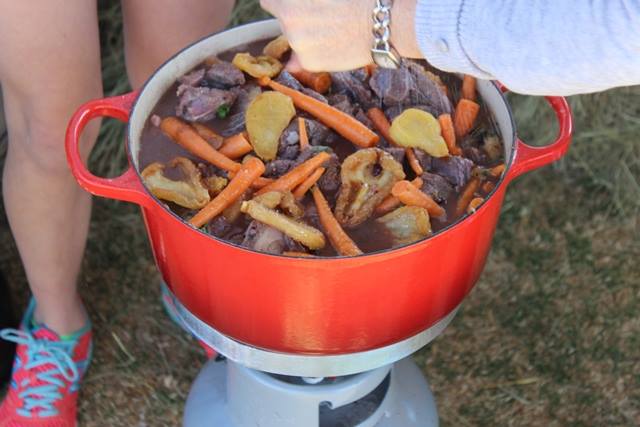Potjiekos
Potjiekos: Exploring the Traditional South African Culinary Art
Introduction
South Africa is a land of diverse cultures, landscapes, and cuisines. Among its many culinary treasures, Potjiekos stands out as a beloved tradition that reflects the rich heritage of the Rainbow Nation. Originating from the Afrikaans-speaking communities, Potjiekos, which translates to “small pot food,” is not just a meal but an experience steeped in history, tradition, and communal gathering. In this article, we delve into the origins, significance, preparation, and cultural impact of Potjiekos.
Origins and Significance
Potjiekos traces its roots back to the early Dutch settlers who arrived in South Africa in the 17th century. These settlers brought with them their cooking techniques, including the use of cast iron pots for slow-cooking meals over an open fire. Over time, this culinary tradition evolved, incorporating influences from indigenous African cuisines, Malay spices, and the cooking practices of other immigrant communities.
The significance of Potjiekos extends beyond its culinary appeal. It serves as a symbol of unity, community, and heritage. Historically, Potjiekos gatherings were occasions for families, friends, and neighbors to come together, share stories, and enjoy hearty meals prepared with love and care. These gatherings reinforced social bonds and provided a sense of belonging in a society marked by diversity.
Preparation and Cooking Process
Central to the preparation of Potjiekos is the cast iron pot or “potjie.” These pots come in various sizes, each suited for different occasions and group sizes. The design of the pot, with its rounded bottom and tight-fitting lid, allows for even distribution of heat and retention of flavors, resulting in tender and succulent dishes.
The cooking process itself is a labor of love that requires patience and attention to detail. First, the potjie is placed over an open fire, allowing it to heat up. Then, layers of ingredients are added sequentially, starting with oil, onions, and spices, followed by meat, vegetables, and starches such as potatoes or rice. Each layer is seasoned and allowed to simmer, allowing the flavors to meld together slowly.
One of the unique aspects of Potjiekos is the concept of “no stirring.” Unlike conventional cooking methods where constant stirring is encouraged, Potjiekos relies on the gentle heat of the fire and the natural juices of the ingredients to create a rich and flavorful stew. This hands-off approach not only enhances the taste but also adds to the communal experience, as participants gather around the fire, eagerly anticipating the meal to come.
Varieties and Adaptations
While traditional Potjiekos recipes often feature ingredients such as beef, lamb, or game meats, along with a medley of vegetables, the versatility of this dish knows no bounds. Modern interpretations of Potjiekos incorporate a wide range of ingredients, including chicken, seafood, and vegetarian options, catering to diverse tastes and dietary preferences.
Furthermore, Potjiekos has not been immune to the influence of globalization and culinary innovation. Contemporary chefs and home cooks have experimented with fusion flavors, incorporating elements from other cuisines while staying true to the essence of Potjiekos. This blending of traditional and modern techniques has breathed new life into this age-old tradition, ensuring its continued relevance in today’s culinary landscape.
Cultural Impact and Legacy
Beyond its culinary appeal, Potjiekos holds a special place in the hearts of South Africans as a cultural institution. It embodies the spirit of ubuntu, the African philosophy of interconnectedness and shared humanity. Through the act of preparing and sharing a meal together, individuals forge bonds, celebrate diversity, and honor the traditions of the past.
Moreover, Potjiekos serves as a form of cultural expression, allowing South Africans to celebrate their heritage and identity through food. Whether enjoyed at family gatherings, community events, or national celebrations, Potjiekos remains a symbol of unity in a country that continues to grapple with its complex history and diversity.
Conclusion
In conclusion, Potjiekos is more than just a dish; it is a celebration of South Africa’s cultural tapestry, a testament to the resilience of its people, and a reminder of the power of food to bring communities together. As we continue to navigate an increasingly interconnected world, the tradition of Potjiekos serves as a beacon of hope, reminding us of the importance of preserving and honoring our shared heritage. So, the next time you gather around the fire with friends and family, remember the centuries of tradition and history encapsulated in that humble cast iron pot, and savor the flavors of South Africa’s culinary legacy.



